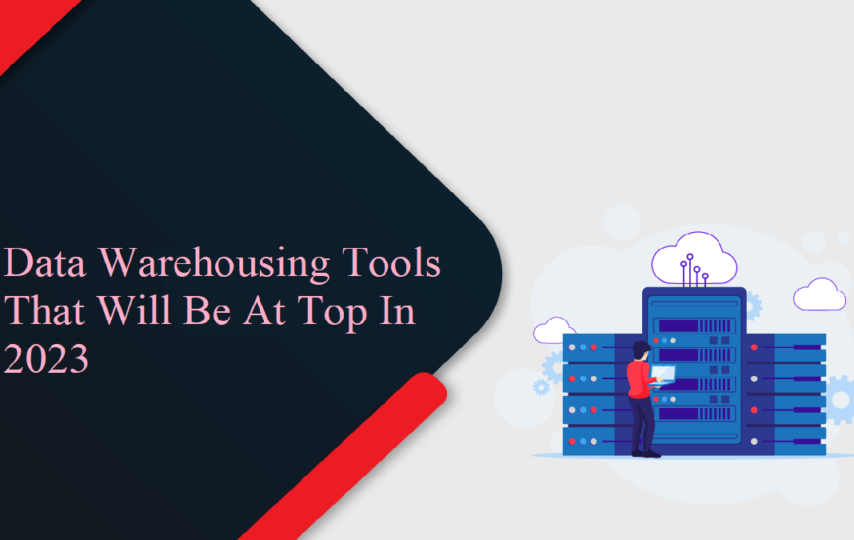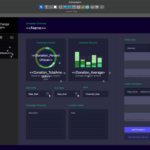The landscape of data warehousing technologies is always expanding, driven both by advances in technology and the rising need for decision-making that is informed by data. As we move into the year 2023, it is essential to have a solid understanding of the major trends that will shape the future of data warehousing technologies and to recognize the companies that are most likely to emerge as industry leaders.
Technology is the primary impetus behind the fast transformation of practically every sector of the economy, and it has become an indispensable component of how we interact with the world around us. It is essential to have a technologically aware mindset to retain one’s relevance. Make sure that your digital profiles are always up to date, that you are aware of developing technologies, and that you understand the consequences these technologies have for your business. Keep a look out for software, tools, and platforms that are specialized to your business that have the potential to boost productivity and simplify operations. You may give yourself a major edge throughout your career by adopting new technologies at an early stage in your development.
The move toward cloud-based solutions is one important trend that is predicted to continue having a significant impact on the data warehousing market. The capacity to scale, the flexibility to adapt to changing needs, and the cost-effectiveness of cloud data warehousing makes it an appealing choice for companies of all sizes. As a result of significant investments made by major cloud providers in the data warehousing services, they provide, we may predict a rise in both the level of competition and the rate of innovation in this sector. In-memory data warehousing solutions are becoming more popular as a result of the growing need for real-time analytics as well as increased speeds of data processing. Because they are capable of high-speed data processing, in-memory databases are well suited for use with programs that demand real-time insights.
What Kinds of tools are there for Data Warehouses?
There are several advantages to emphasizing how a data warehousing company is for gathering and organizing data efficiently. In the first place, it fosters both one’s personal and professional development. You may position yourself as a valuable asset in your area by being current with the changes in your sector, developing new skills, and becoming alert to the trends that are now prevalent.
The utilization of technologies that are part of a data warehouse is an integral part of both data analytics and big data. They are often used in conjunction with extract, transform, and load (ETL) technologies for data standardization, predictive analysis, and business intelligence. Artificial intelligence (AI) and machine learning are the two technologies that enable these tools to fulfill their functions effectively. Below are some of the important tools.
- Amazon DynamoDB
DynamoDB is a highly scalable NoSQL database system that runs in the cloud and is designed for use by businesses. It is possible to extend the capacity for querying up to 10 or even 20 trillion queries per day over petabytes of data. In addition to this, a customizable schema is produced via the use of key-value and document data management. Therefore, tables are capable of autonomously scaling to meet expanding needs by adding additional columns to the table.
- PostgreSQL
PostgreSQL is supported by a robust community, which ensures that it receives consistent updates, bug patches, and ongoing development. PostgreSQL is an excellent option to consider whether you are a software developer in need of a dependable and feature-rich database or a company in need of a data solution that is both scalable and safe.
- Amazon RDS
The simplicity of both usage and maintenance is one of the many selling points of Amazon RDS. It takes care of monotonous activities such as setting up the database, patching, making backups, and automatically updating the software so that you can concentrate on the development of your application.
- Sap Hana
The data is stored in memory rather than on disks, which eliminates the requirement for disk-based storage and greatly increases the speed at which data is processed. Because of this, businesses now can instantly analyze vast amounts of data, therefore acquiring critical business knowledge in a matter of seconds rather than hours or days.
Why Should You Use Software and Tools Specifically Designed for Data Warehouses?
- As a result of the fact that the data warehouse aggregates information from a broad range of sources, there is an urgent need to unify and organize this disjointed data. The automation of repetitive tasks is an essential component of any data warehousing system, as it enables the most effective use of resources
- ETL, which stands for “Extraction, Transformation, and Loading,” is a process that makes use of the software and resources that are connected with a data warehouse to help in enabling the movement of data across different levels of the warehouse architecture in a smooth manner. The ETL process may be broken down into the following steps:
- To complete the extraction process, you will need to get raw data from many different sources. This information might be saved in some formats, such as JSON, XML, or relational databases, for example.
- The data that was collected must first be processed according to the criteria of the firm before the transformation can be finished. Only then will the transformation be complete. The data must be cleansed, formatted, and structured before the transformation process can begin. This is done to guarantee that the recovered data is accurate and reliable. Since the data might take on some forms and structures, this is essential.
- The transmission of data to the warehouse, where it is subsequently encrypted for use both internally and externally, is the first step in the loading process. The encrypted data is then used.
Why keep a Data Warehouse as your technological advancements?
To be able to data connected in your field implies that you can keep up with the most recent technological advancements, industry trends, and abilities that are in high demand. Those that make maintaining their relevance a priority throughout their careers are proactive in their pursuit of new information, accepting new possibilities, and continually adapting to meet the ever-evolving demands of their particular industry. It is not only an option but also a must. It makes it possible for people and enterprises to maintain their competitive edge, recognize possibilities of significant value, and prosper in any setting.
Bottom Line
It will be fascinating to see these industry experts determine the future of data warehousing as technology continues to advance at its current rate of change. We have listed the top data warehousing tools that are anticipated to be the leaders in the industry in the year 2023. Your company will be able to maintain a competitive advantage in the ever-changing data warehousing industry if you use these tools.





